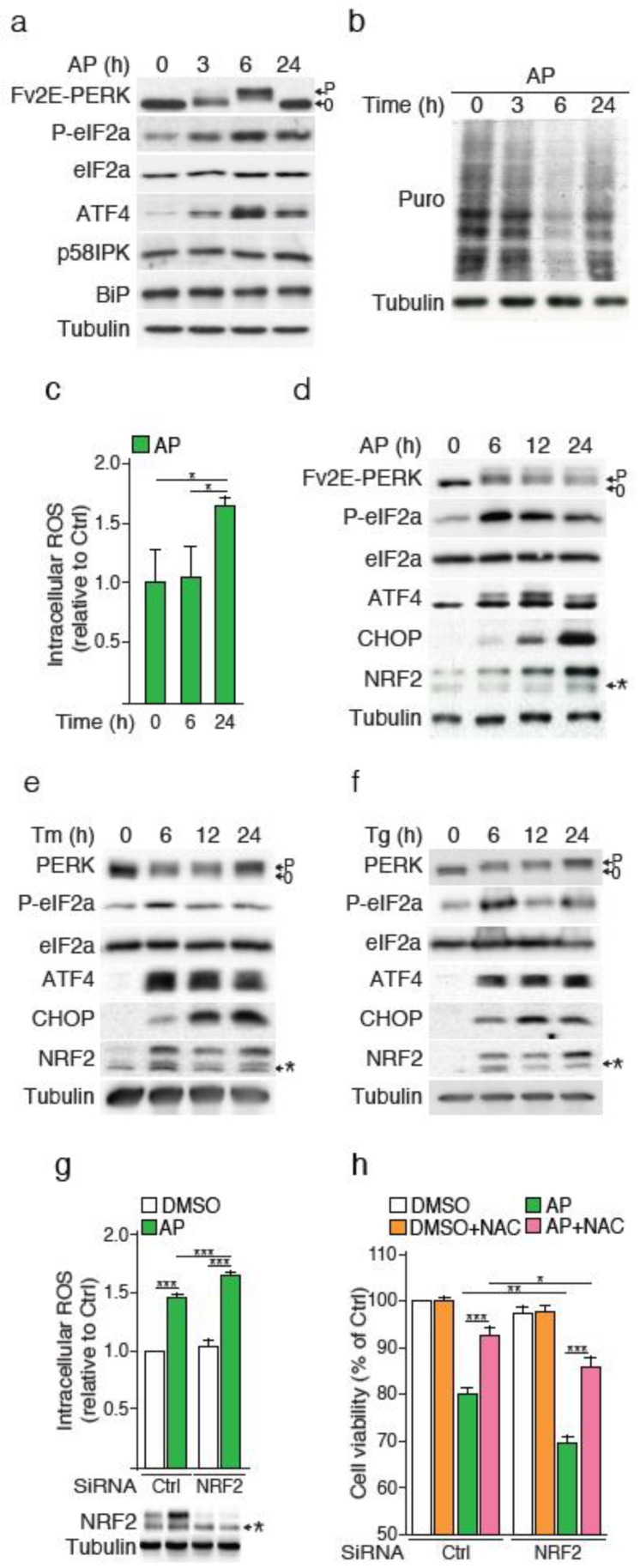Figure 1.
The sole activation of PERK recapitulates reactive oxygen species (ROS)-mediated cell death upon endoplasmic reticulum (ER) stress. (a) Time course analysis of Fv2E-PERK and unfolded protein response (UPR) markers following AP20187 (AP) treatment of NCI-H358 cells. Fv2E-PERK activation was assessed by monitoring changes in Fv2E-PERK band mobility upon AP treatment. P = phosphorylated and 0 = non-phosphorylated form of the protein. (b) Protein synthesis rate measurement by SUnSET assay. (c) Intracellular ROS measurement by fluorescence detection. Cells were treated with AP for 6 and 24 h. ROS fold increase per cell is reported. Time course analysis of Fv2E-PERK, P-eIF2a, ATF4, CHOP and NRF2following treatments with (d) AP, (e) tunicamycin or (f) thapsigargin. * = non-specific bands (g) Cell viability of NCI-H358 cells silenced for NRF2 upon PERK activation. NRF2 knockdown was confirmed by Western blot analysis. * = non-specific bands. (h) Cell viability of NCI-H358 cells silenced for NRF2 and treated with or without AP or N-Acetylcysteine (NAC). NAC was added to cell culture 1 h prior to adding AP for 24 h. Data are expressed as means ± SEM of at least three independent experiments, * p < 0.05, ** p < 0.01, *** p < 0.001.

